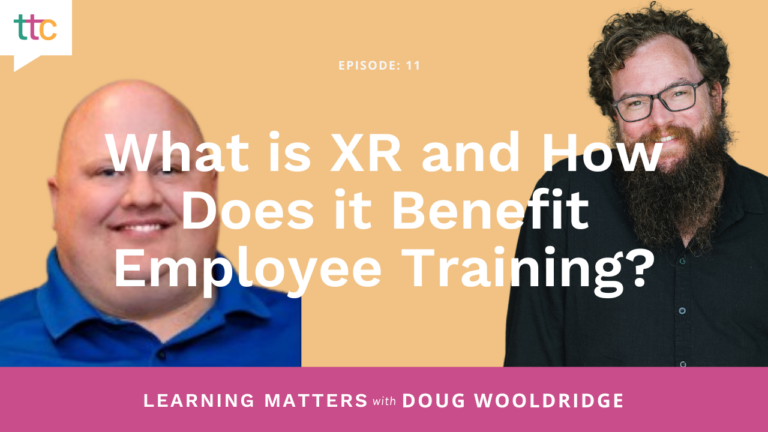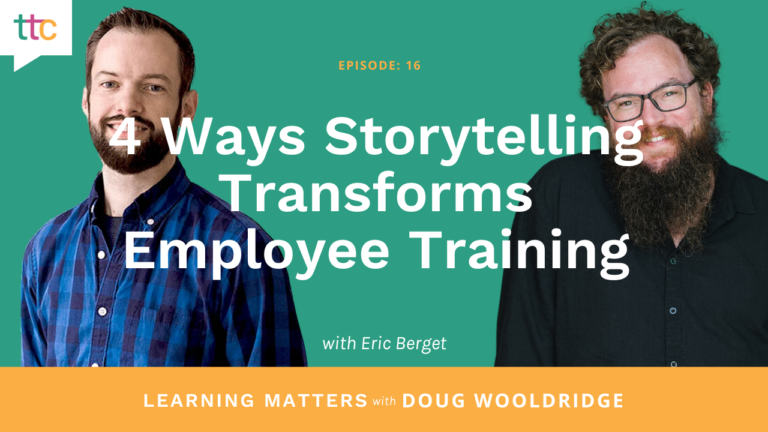What is adaptive learning? It’s a relatively new learning and development term that boils down to really good storytelling and a choose-your-own-adventure style of training. Where the learner ends up is based on what actions the learner takes. It’s like artificial intelligence for L&D. NASA uses it, many smart phone apps use it, and now some appliances even have it. In L&D, adaptive learning has two basic applications:
- It allows learners to explore different potential outcomes for soft skills. Humans are complex; therefore, human interactions are complex. Learning how to navigate the endless potential computations of human interactions can be daunting. Adaptive learning gives your learners an opportunity to experience some of these outcomes in a “safe” environment before practicing in the real world.
- It allows learners to further explore topical areas that interest them. Outside of interactions with other humans, there are also endless opportunities to interact with and learn about the world around us. In corporate settings, this often applies to product lines and offerings. In general, this can also apply to physiological, ecological, and societal intricacies – to name a few. In these L&D adaptive learning scenarios, learners have the option to dive deep into the nuances of an area that interests them. For example, some people may be interested in the general subject of botany. Others may want to drill down into the inner workings of the fungi mycelium network.
How can you apply adaptive learning to your current organization?
First and foremost, you need to know your organization. As an L&D specialist, your job is to learn everything you can about the company you are working in. This includes culture, products, technology, processes, pain points and differentiators. You are the voice of future learners. A Six Sigma or AGILE corporate culture will support adaptive learning that follows these basic principles. The learning must bring learners through a stringent process and express the importance of the methodology, even when interacting with customers. Many organizations are taking a more creative approach to sales and customer service, giving employees the opportunity to handle situations with loose parameters, while still adhering to general product and service knowledge.
Once you know the following basics, you can begin to create and apply adaptive learning:
- Know your company’s technological constraints. What technologies can you use? Does the adaptive learning need to integrate with intranets? LMS?
- Know your budgetary parameters. Does your company already have licenses for adaptive learning tools? Do you have a budget to purchase these? Development time for adaptive learning can be much higher than other types of training. Do you have the budget and resources to support adaptive learning development?
- Know your learners. How will your learners utilize adaptive learning? Will this add the value you are hoping for? Are there certain topical areas that will interest your learners?
- Know your shortcomings. Do you have the in-house skill set to develop complex adaptive learning? Do you need to augment your staff for adaptive learning development?

One FREE Week!
New clients, tap into our talent with one week of Innovators on Demand® on us.
Get started with one of our skilled Innovators.
6 Steps to Create Adaptive Learning
- What topics are best suited for adaptive learning? How will this meet your company’s goals? How will it benefit the learner? Is this going to be embedded in eLearning or a stand-alone, detailed multi-step case study? Integrated into the LMS or tied to curated content? Brainstorm as much as you can, then highlight those items that are the most critical for your current project.
- Map it. We’ve mapped the stars to navigate the world, and you must map the learner experience to help them navigate their learning adventure. For scenario-based learning, I have often used Visio or similar tools to create a branching diagram. For each point where a decision is made by the learner, there are often three to four outcomes. Each outcome then becomes another learner decision point, with three to four additional outcomes. To learn more about developing branching, click here and here.
- Design it. Use tools to create a detailed design document. Storyboards, thumbnail sketches, mind maps, etc. are all good tools to use for designing the various outcomes of a decision the learner will make and where that decision will take them.
- Develop it. This is always where the rubber meets the road. The more care you take here, the better the experience for your learner.
- Implement it. Put it out there for learners and let them know it’s ready for consumption.
- Listen to the feedback you get and adjust future iterations or adaptive learning projects accordingly.
For more inspiration, take a look at these ten innovative examples of adaptive learning in action from Education Drive.






